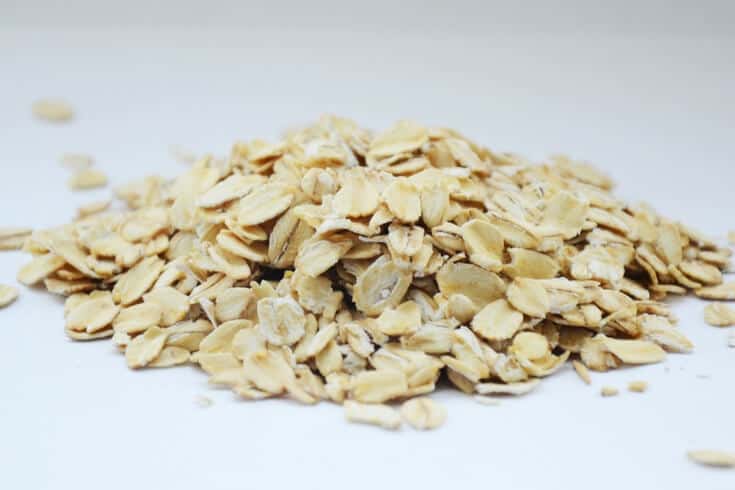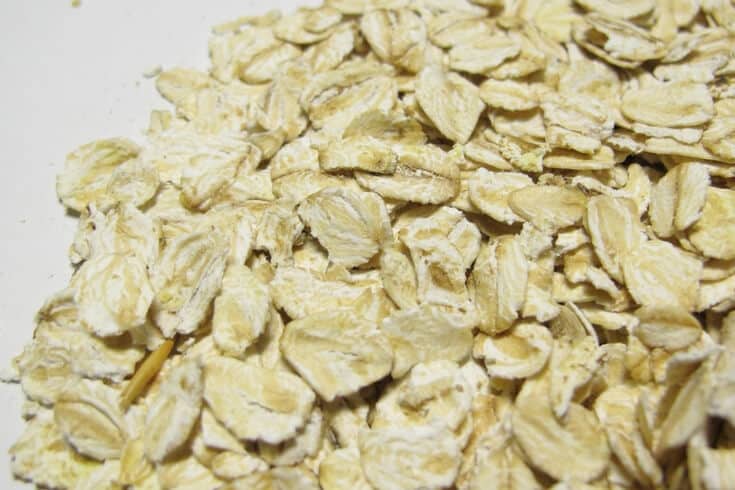Using a DIY oatmeal mask for acne might sound weird. But if you understand the science behind why it fights acne, it makes perfect sense. Plus, it’s cheap!

Got acne? Want to try to get rid of it using all-natural ingredients? This website offers several natural ways to help eliminate acne.
There’s apple cider vinegar. And colloidal silver. And shea butter. There’s sesame oil. And even coconut oil can help with problem skin.
It’s highly doubtful you’ve tried all these natural solutions for acne. But even if you have, have you also tried “avena sativa?”
It’s probably not the same sativa you’re thinking of. Avena sativa doesn’t get you high. That’s cannabis sativa. (Sativa means “cultivated seed” in Latin.) Avena sativa is oatmeal. And when you use an oatmeal mask for acne, the results can be astounding.
No, an oatmeal mask isn’t an end-all cure for acne. However, there’s lots of anecdotal evidence that a DIY oatmeal mask helps reduce acne flare-ups. Moreover, there is plenty of scientific evidence that oatmeal, yes, the same oatmeal you have for breakfast, has therapeutic benefits. The best part is that an oatmeal mask is as easy to make as it is making it for breakfast.
Anti-inflammatory effects of oatmeal
Oatmeal is a centuries-old topical treatment for several skin conditions. So says this study in Journal of Drugs in Dermatology. But how and why is an oatmeal mask for acne effective? According to the researchers, oatmeal diminishes inflammation.
Especially, inflammation that relates to cytokines. Cytokines are proteins. Not proteins like a side of beef or slice of chicken breast. But rather, proteins in the body. Specifically, proteins in your cells. Your cells release cytokines. The reason your cells release cytokines is to communicate and interact with each other.
Cytokines play a big role in your immune system. Thus, cytokines can be good. Like a military general, cytokines rally troops of the the immune system to fight a foreign invader. Think: bad germs. However, cytokines can go rogue. Sometimes, they may trigger inflammatory diseases. Cytokines go haywire in autoimmune diseases. Examples of autoimmune diseases are rheumatoid arthritis and Crohn’s disease.
Just as there are good bacteria and bad, there seems to be good and bad cytokines.
What does this long biochemistry lesson have to do with an oatmeal mask for acne? It helps you understand why an oatmeal mask can help your skin. The reason why is oatmeal shuts off the bad cytokines which lead to inflammation. In addition, the study shows oatmeal can be beneficial for skin dryness and scaling. And also, if you have roughness, itchy skin.
Furthermore, oatmeal is not only good for your skin because it shuts down bad cytokines. It’s also good for your skin because of its antioxidant properties.

Oatmeal on face benefits
Now you understand somewhat the science behind using an oatmeal mask for acne. But the practical reason why an oatmeal mask works is this. It literally soaks up the extra oil on your skin. Many people think oil on the skin is bad. However, the opposite is true. Your skin should have a proper amount of natural oil. Conventional acne treatments such as pads completely dry out the skin. It’s true that you can have too much oil. In this case, an oatmeal mask may be highly effective if you have acne.
Another practical reason why a DIY oatmeal mask works: it can eliminate dead skin cells and also moisturize and soften your skin. Acne is an indication of bad bacteria. Oatmeal naturally contains zinc. In fact, a serving (100g) contains about 20% of the recommended daily value of this mineral. And zinc can help kill the bad bacteria that manifests as acne.
How to make an oatmeal mask for acne
Without doubt, there are dozens of recipes online for oatmeal masks. But let’s try a simple one. All you need to do is pretend you’re making oatmeal for breakfast. Bring a half-cup of oatmeal to a boil in a one-third cup of water. Obviously, you wouldn’t put scalding oatmeal or water on your face. So give the oatmeal time to cool. Add about a tablespoon of honey. Why honey? We’ll get to that shortly….
Some DIY oatmeal masks are made with an egg yolk. The vitamin D in the yolks may also benefit the skin. In addition, when you blend or mix the egg yolk in a bowl, it makes the paste more malleable for spreading on your face.
Now you are ready to apply the oatmeal mask. Leave the mask on for about 15 minutes or so. Simply wash it off with water and towel dry.
Try this DIY oatmeal mask treatment 2-3 days a week.

Does it matter what kind of oatmeal you use?
Yes. Cook the oatmeal if you want to reduce inflammation. If you use uncooked oatmeal it’s not going to be any more useful than a scrubbing pad or loofah. Also, don’t use flavored oatmeal. You know, the sugar-laden packets you no doubt ate when you were a kid. Opt for whole rolled oats or steel cut. And though there’s no research that organic oatmeal is any better for your face, if you have the money, might as well use organic. It can’t hurt (unless you forget to let it cool.) Plus, you’ll have peace of mind that the oatmeal you’re applying to your face is GMO-free.
How to Make an Oatmeal and Honey Mask
The reason why you should add honey to the oatmeal mask for acne is simple.
Honey magnifies the antibacterial effects of the oatmeal. For thousands of years, skin wounds have been healed with honey. But not just any honey will do. For the best oatmeal mask, use Manuka honey. The therapeutic properties of Manuka make it the most superior honey.
For best results, add Manuka honey to hot oatmeal. This way, the honey and oatmeal will be easier to mix. Use two heaping tablespoons of Manuka, which is the easiest honey to spread on your skin.
Oatmeal face mask for acne without honey
If you’re in a rush or just lazy, you can try an oatmeal mask for acne without honey. However, why would you want to? As you can read above, honey and oatmeal make for a dynamic acne-fighting duo.
But if you’re allergic to honey or flat out for some reason don’t want to use it, it’s really easy to make a mask without it. You simply make oatmeal just like you would for breakfast.
If you want the oatmeal to cool faster, you can place a bowl of cooked oats in the fridge. Some people use a coffee mill or grinder or blender to turn the oatmeal into a more powdery consistency.
Grinding the oatmeal might make it easier to apply to your face. However, it’s not necessary to do that if you don’t want. Simply apply cool cooked oatmeal to your face and spread with your fingers. Apply over the sink. Then, go watch a TV show or read a book for about half an hour. Next, rinse the mask off with warm water and pat your face dry with a towel.
Have you ever tried an oatmeal mask for acne? Leave a comment below….






